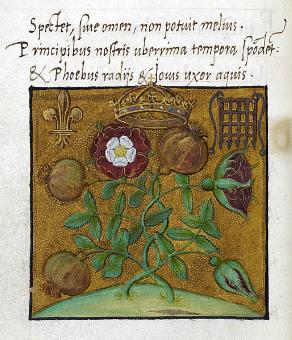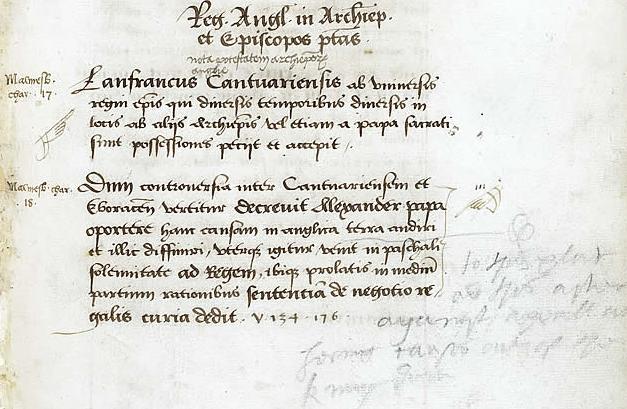First, if you are anywhere near the British Library, go see this exhibit.
Give yourself a lot of time, no less than 2 horus – better 3 – because it is big.
Get the audio headset for commentary.
Don’t imagine for a moment that this is some glorious panegyric to a long dead King.
The audio presentation by David Starkey from the onset describes him as a "youthful idealist turned into an aging, sickly tyrant… a bloated wife-murdering monster". Someone who shouldn’t have been king at all.
 You have a much deeper sense of the sort of person Henry was to become because the exhibit starts with a look at Henry’s youth.
You have a much deeper sense of the sort of person Henry was to become because the exhibit starts with a look at Henry’s youth.
He is presented as a rather pious fellow, zealous for his Catholic faith in many ways, though self-absorbed, raised in the company mostly of women, as the second son. By the end of the exhibit, you have seen a twisted soul compromise something he held dear.
Some of the objects on display are remarkable. I was deeply moved, as I sometimes am – I confess – at the sight of documents which in effect were involved with changing the world. If you are as well, this is the show for you.
Great attention was given to the marriage of the first son Arthur to Catherine of Aragon, his death and the subsequent arrangements for Henry and Catherine. The first part of their marriage is presented, which makes his pursuit of Anne Boleyn more bitter and strange.
For example, and in no special order, …
- Henry’s letter to Anne in gushy French reacting to her finally agreeing to marry him – set next to his writing desk decorated with his and Catherine’s arms
- a letter of Henry to Wolsey describing the king’s hopes for the birth of Anne’s baby. It turned out to be a still-born daughter.
- the last letter of Thomas More to Henry… "‘I shold onys mete with your Grace agayn in hevyn, and there be mery with you.’ … along with the famous sketch by Holbein
- a letter of John Fisher with a Holbein

- The act of Supremacy of 1534
- handwritten draft of the King’s oath
- Henry’s will
- an autographed copy of Henry’s Assertio sent to Pope Leo X
- the document of marriage of Henry to Catherine of Aragon
- a "to do" checklist of Thomas Cromwell including the execution of Thomas More and John Fisher "Item. what shalbe done father touching maister More … Item. when Maister Fissher shall go to execucion with also the other". Both "x"d.
- a prayerbook with love note in the margins which Henry and Anne passed back and forth during chapel services
- docs relating to the annulment/divorce and trial of Anne
- the Valor Ecclesiasticus, or assessment of value of Catholic Church holdings which Henry raped
There are many books and manuscripts in which Henry wrote notes, often with a little "manicule", or small hand drawn by him to mark something. For example, there are many tomes he used when researching how to get around the whole wife thing so that he could have Anne. You can see how he focused on Leviticus, for example.
There is an amazing section in the exhibit on Henry’s victims and what he did to the Catholic Church.
In effect, you get a remarkable sense of the people and of the tensions and terrors of his time.
I was stirred at many of the items, given their context and significance for the history of the world. It was almost like reading a anguished pathology report.


































I’ll definatly go the next time I’m in London
I was raised Episcopalian and went with my mother and grandmother to England when I was 12. We toured the Tower and so on, and even then I was struck with what a twisted man Henry was. The trip probably aided in my leaving Protestantism eventually as I sort of began to look at my religion as being founded by a louse.
If Prince Arthur had only lived! If the Henry of the Assertio Septem Sacramentorum had stayed faithful — to Katherine! If he had kept his eye from roving and his zipper up! Just think how the religious history of the entire Anglophone world would have been different!:
1. The Anglo-Irish conflict would have been minimal, even non-existent, and Drogheda and Wexford beautiful and flourishing cities on the order of Salzburg and Pienza; “Black and Tan” would be a dye for clothing, and “IRA” a banking term.
2. No Spanish Armada, no Elizabeth I with Mary Tutor instead having a long reign, no English Martyrs, no execution of Thomas More or Mary Stuart, no Gunpowder Plot, no English Civil War, no Cromwell, no Titus Oates, no Test Act and 5 Mile Act, no William and Mary, no Hanoverian and Windsor dynasties, no Gordon Riots, no need for Catholic Emancipation, no conflict in Canada between Quebec and the rest of the country
3. No Episcopalians, no Puritans, no Baptists, no Methodists, no Church of Christ, no United Church of Christ, no Disciples of Christ, no Quakers, no Unitarians, no Christian Science, no Jehovah’s Witnesses, no Fundamentalists, no Pentecostals, no Dispensationalists, and likely no Mormons and Scientologists
4. No Salem Witch trials, no Know-Nothings, likely no Mexican War, likely no slavery or at least peaceful emancipation, no Spanish-American War, no KKK (mostly and anti-Catholic organization in the 1920s), no James G. Blaine, no Prohibition, no laws against gambling and betting, few if any Blue Laws, no US involvement in World War I (see Richard Gamble’s book on how liberal Protestants got us into WWI), no abortion, no homosexual marriage, no bishops Spong and Schori
5. No tendency in Catholic churches to copy Protestant liturgy, Protestant iconoclasm, Protestant theology, and Protestant Biblical studies
6. The vast majority of churches in any town or city in England, Wales, Canada, the USA, and Australia — except in areas with North German and Scandinavian immigration (the Midwest) — would have been Catholic, and many US cities would have names for saints, and holidays for major Catholic Feasts and Solemnities; and the English and American countrysides would be dotted with monasteries.
7. Free of iconoclasm and Calvinist anti-music, there would have been a flourishing of the visual arts and music in the USA
8. a general tendency in the US population to first reflect rather than to emote
9. The Americans, the Irish, and the British in their general character — and in their cooking! — would resemble more the French, the Spanish, the Austrians, and the Italians
— and one could go on and on!
Lest I be misunderstood in my previous posting, I am not ignorant of the considerable cultural achievements of the Protestant religion, achievements which I honor.
The British Library has a podcast feed, and several episodes about the Henry VIII exhibition are available, including ‘David Starkey on Henry VIII: The Achievement 1533-47’, ‘David Starkey on Henry VIII: The Change 1509-33’, ‘Henry VIII’s Psalter’, ‘David Starkey: The Young Henry VII’, ‘Henry VIII and the Field of Cloth of Gold’, ‘Henry VIII’s Music’, and ‘Henry VIII’s Maps’.
This podcast feed is http://feeds2.feedburner.com/BritishLibraryPodcasts
There are many other Henry VIII podcasts from the BL. Go to the BL’s site and search for ‘podcast’, and you will easily fill your mp3/ogg player.
I’m a subscriber to ‘Royalty’ Magazine, and there were some examples of the Henry VIII exhibits at both the Tower of London and Windsor Castle.
Great analysis there, Sid!